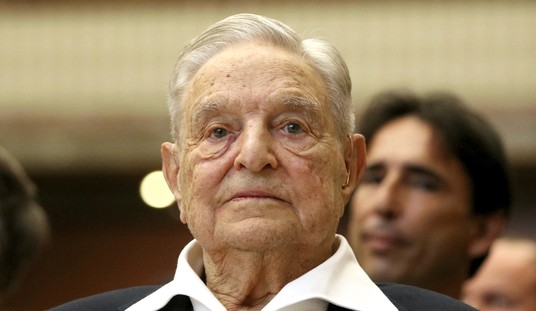Inflation dropped by one-tenth of one percent in April, according to the Labor Department.
The Consumer Price Index fell to 3.4% in April, compared to 3.5% in March. The closely watched "core" rate of inflation, which excludes food and fuel costs, rose 3.6% in April. That's the lowest increase since April 2021.
This is more than a year after the Fed began to jack up interest rates in an effort to cool inflation. The Federal Reserve's target rate of inflation is 2%, and even with the slight drop., the rate still has a long way to fall to reach that goal.
“I would characterize it as a small step in the right direction,” said Stephen Stanley, chief U.S. economist at Santander.
The New York Times sounds positively jubilant.
The slowdown will likely come as welcome news to consumers, and as a relief to policymakers at the Federal Reserve, who have been concerned that they were losing ground in their fight against inflation. But economists cautioned that one month of encouraging data was far from enough to set those worries to rest.
Fed Chairman Jerome Powell is more realistic.
“We did not expect this to be a smooth road,” Powell said at a discussion in Amsterdam on Tuesday. He said the Fed would need to “be patient and let restrictive policy do its work.”
Stocks soared on the news of slightly lower inflation, but many analysts caution against such irrational exuberance.
“This is the first print in a month that wasn’t hotter than expected, so there’s a relief rally,” said Dan North, senior economist at Allianz Trade North America. “The excitement is a little overdone. This is not Caitlin Clark. She’s exciting, this is not exciting.”
The energy index rose 1.1% for a month and was up 2.6% on an annual basis. Food was flat and up 2.2% respectively. Used and new vehicle prices, which had contributed to the early rise in inflation during the worst of the Covid pandemic, both declined, falling 1.4% and 0.4% respectively.
Areas showing notable gains on the month included apparel (1.2%), transportation services (0.9%) and medical care services (0.4%). For transportation services, that took the annual increase up to 11.2. Services excluding energy, a key point for policymakers, increased 0.4% on the month and was up 5.3% on the year.
The inflation increase was bad news for workers, who saw earnings fall 0.2% on the month when adjusted for inflation. On a 12-month basis, real earnings rose just 0.5%.
The loss of earnings shouldn't excite consumers, nor should the rise in energy prices. Consumer sentiment and the outlook for businesses are still down in the dumps.
In April, dimming hopes for summer rate cuts battered the Treasury market, where yields largely track short-term rate expectations. Major stock indexes notched their worst monthly performances of the year. The pessimism more recently appears to have rippled into the real world.
U.S. consumer sentiment veered sharply lower in May, according to preliminary results of a University of Michigan survey released last week. Americans’ outlook darkened in part due to expectations that both inflation and interest rates will stay elevated, pressuring households’ day-to-day budgets and keeping mortgage rates high.
It's kind of silly to jump for joy after such a small decrease in inflation and little corresponding evidence that we're over the hump as far as inflation is concerned.
Inflation is stubbornly high because the Biden administration refuses to begin reducing the federal budget deficit. Until it does, achieving the Fed's 2% target for inflation will continue to be a fantasy.










Join the conversation as a VIP Member